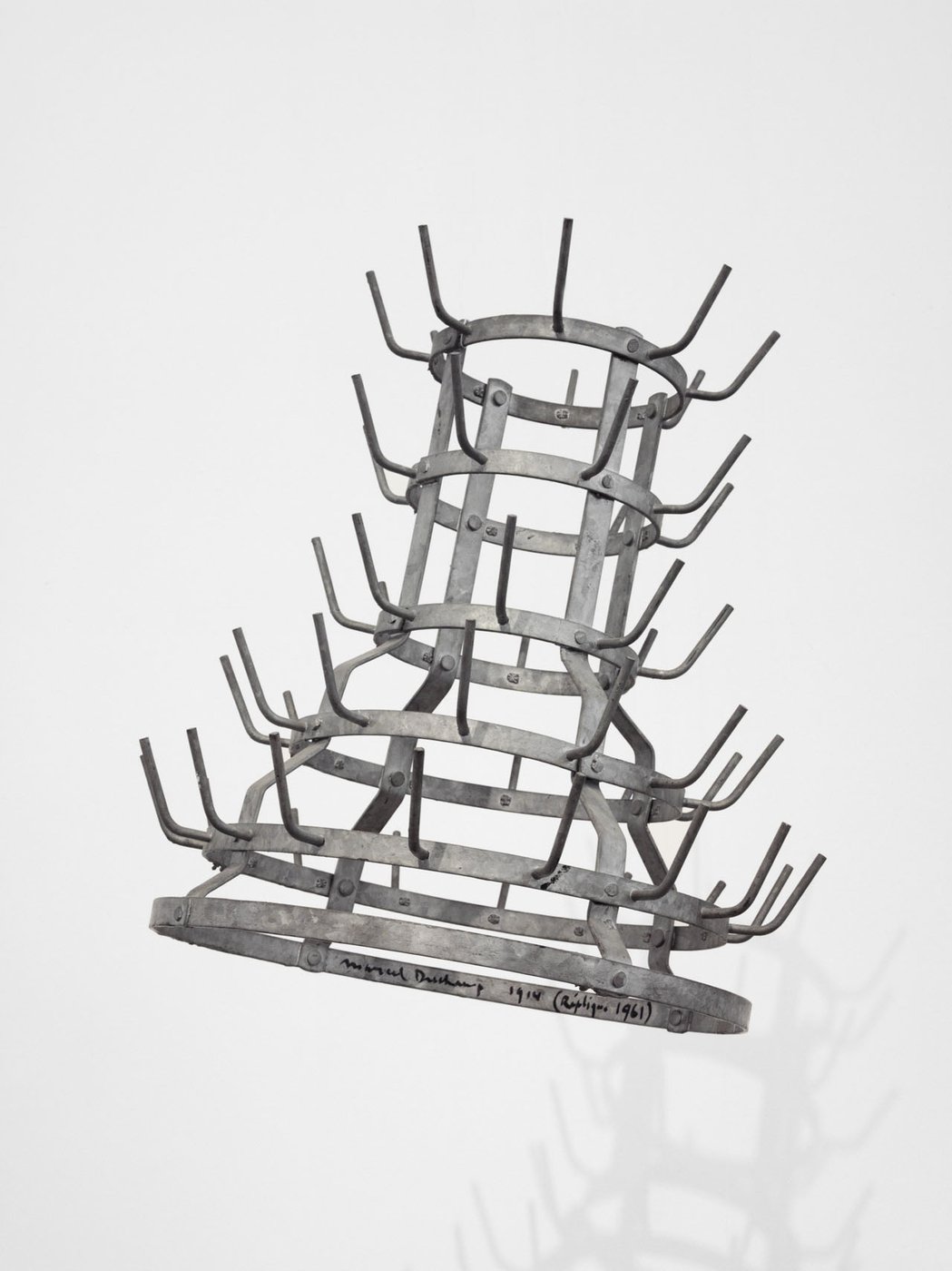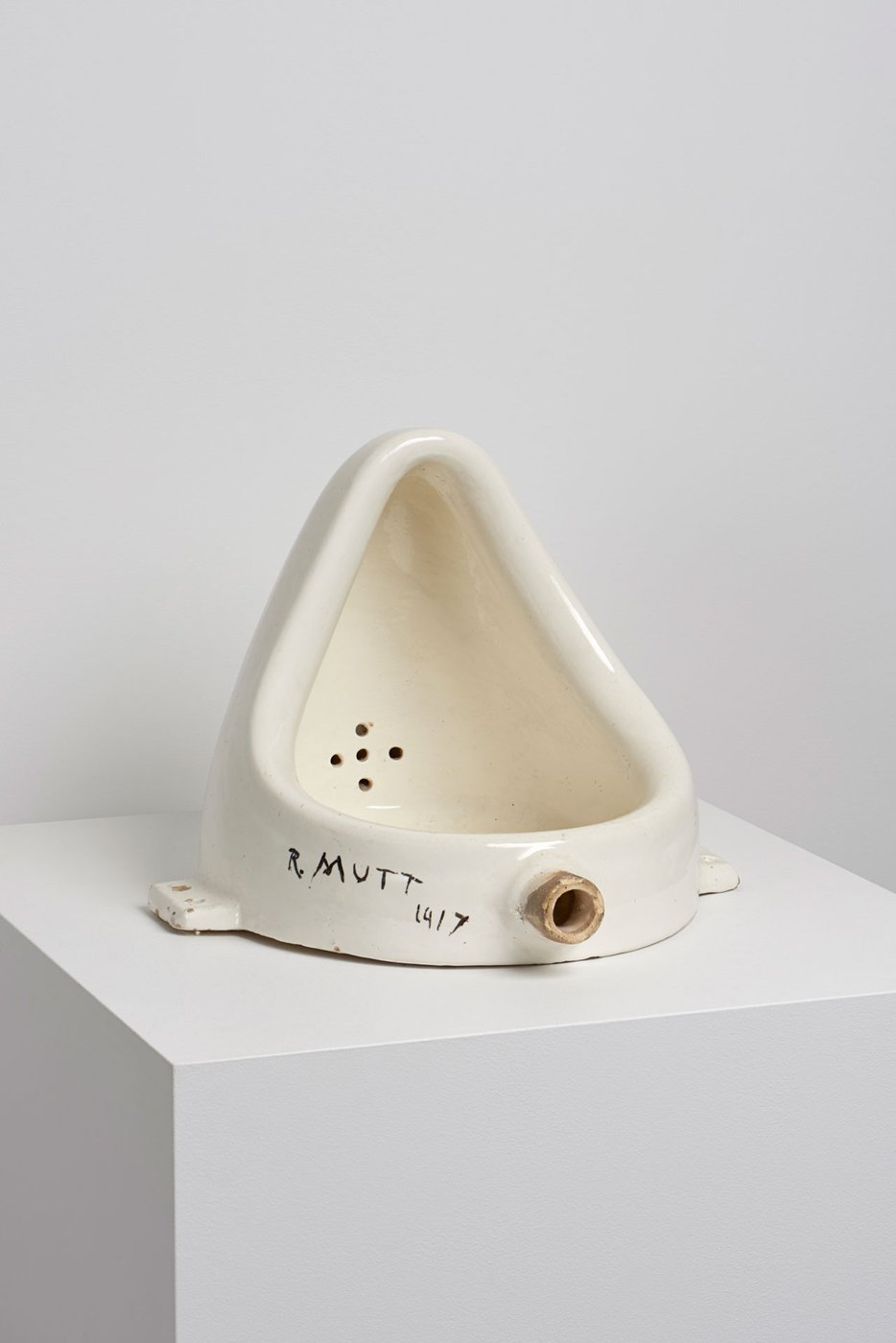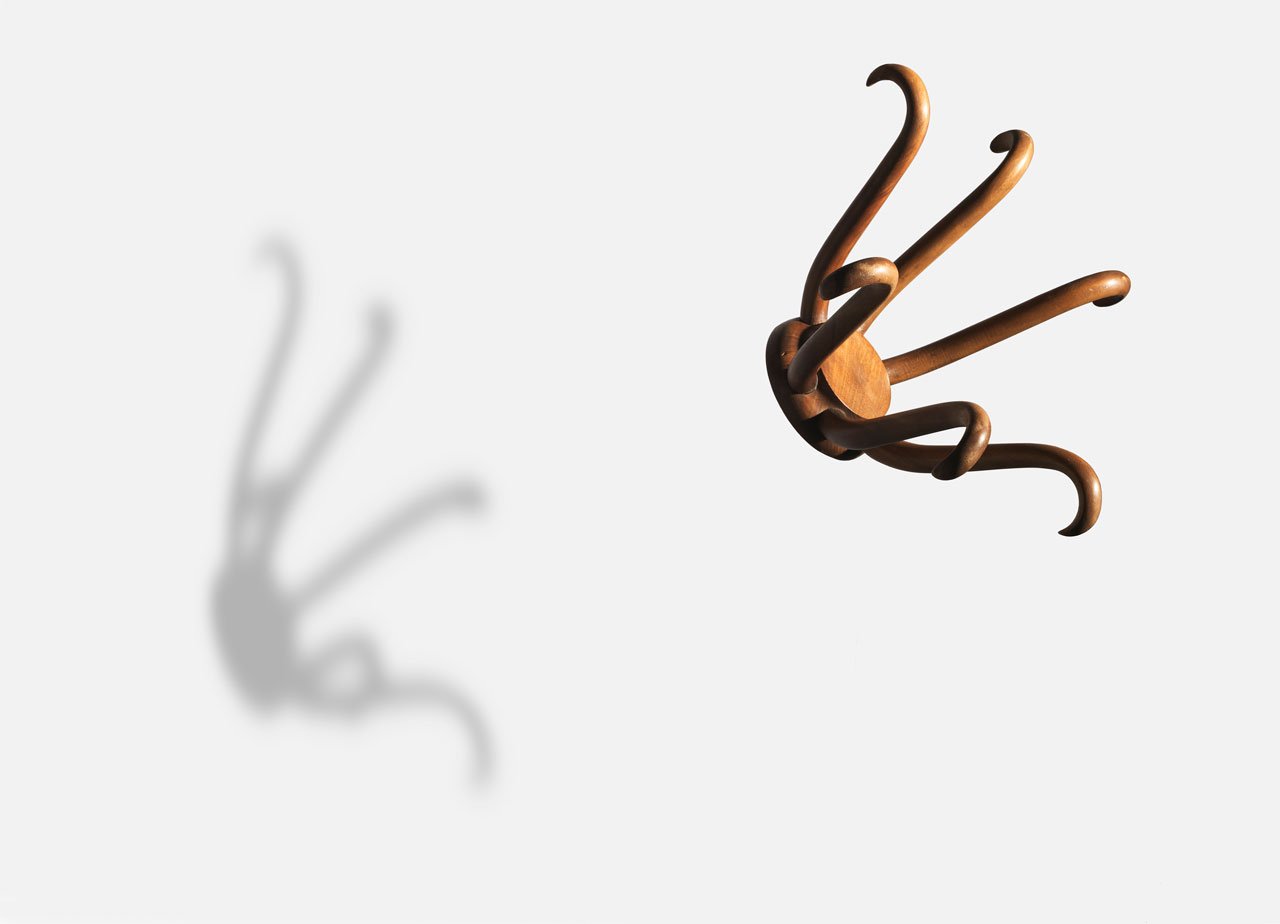Menu

Marcel Duchamp, Hat rack 1964 (replica of 1917 original) National Gallery of Australia, Canberra; Fountain 1950 (replica of 1917 original) Philadelphia Museum of Art; Bicycle wheel 1964 (replica of 1913 original) Philadelphia Museum of Art; Bottlerack 1961 (replica of 1914 original) Philadelphia Museum of Art © Association Marcel Duchamp/ADAGP. Copyright Agency, 2018.

Who was Marcel Duchamp?
Marcel Duchamp (France/USA, 1887–1968) was one of the most original figures in the history of modern art. He began making his name in 1911 as a member of the Paris cubist group. Then, at the age of 25, he took the momentous decision to abandon painting and embark on a life of perpetual self-reinvention. ‘I was interested in ideas,’ he reflected in 1946, ‘not merely in visual products.’
In 1912, Duchamp started the long process of creating the most complex work of his career, The bride stripped bare by her bachelors, even (The large glass), a construction that epitomised his goal of shifting art from the visual to the conceptual. One year later, the first of the works he called readymades – ordinary objects that gained unexpected meanings when he placed them in artistic contexts – pushed aside conventional definitions of art entirely.
During the 1920s and 1930s, Duchamp propagated the myth that he had given up art and devoted himself to playing chess. But at the same time he launched new projects under the cover of a female alter ego named Rrose Sélavy. The artist retained his aura of mystery rooted in his elusive persona and his unconventional artistic activities even as he became increasingly famous after World War II.
In 1950, Duchamp assisted his primary patrons, Louise and Walter Arensberg, in negotiating the gift of their distinguished collection to the Philadelphia Museum of Art, thereby ensuring that the majority of his work would remain together in a single institution. That gift forms the core of this exhibition. Organised into four chronologically arranged sections, 'The essential Duchamp’ is the largest exhibition of the artist’s work ever seen in Australia. It presents a comprehensive overview of a figure who transformed our thinking about the artistic act and about art itself.
Anything is art if an artist says it is.
— Marcel Duchamp

Marcel Duchamp
Nude descending a staircase (no 2), 1912
© Association Marcel Duchamp/ADAGP. Copyright Agency, 2019

Marcel Duchamp
Bottlerack, 1961 (replica of 1914 original)
© Association Marcel Duchamp/ADAGP. Copyright Agency, 2019
Duchamp’s legacies
Duchamp-influenced artworks from the Gallery’s collection

Marcel Duchamp
Apolinère enamelled, 1916–17
© Association Marcel Duchamp/ADAGP. Copyright Agency, 2019

Marcel Duchamp
Fountain, 1950 (replica of 1917 original)
© Association Marcel Duchamp/ADAGP. Copyright Agency, 2019
It’s the viewer that makes the work.
— Marcel Duchamp
Five questions on Duchamp
We asked an artist, a chess expert, a millennial and others what Duchamp means to them.

Marcel Duchamp
Rotoreliefs (optical disks), 1935
© Association Marcel Duchamp/ADAGP. Copyright Agency, 2019

Marcel Duchamp
Hat Rack, 1917 (reconstructed 1964)
© Association Marcel Duchamp/ADAGP. Copyright Agency, 2019

Audio
Matthew Affron, 'Given: Marcel Duchamp' at the Art Gallery of NSW
Matthew Affron is the Muriel and Philip Berman Curator of Modern Art at the Philadelphia Museum of Art. Matthew Affron’s lecture tells the story of the life and art of Marcel Duchamp (1887-1968): his beginnings as an artist and his engagement with cubism; his decision, at age twenty-five, to abandon painting, and its momentous consequences; the launching of new projects in the 1920s and 1930s using the name of Rrose Sélavy, a female alter ego; and finally, Duchamp’s paradoxical celebrity after the Second World War. His lecture concludes with reflections on Duchamp’s legacy for art in the West.

